Chasing Float Gold—The Starry Night Wash
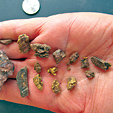 The sun was beginning to set, which put the light at just the right angle against the hillsides to where I believed that I spotted a very small dig and tailings pile up the hill near the top of the second wash.
The sun was beginning to set, which put the light at just the right angle against the hillsides to where I believed that I spotted a very small dig and tailings pile up the hill near the top of the second wash.
California to Allow Suction Dredging in 2019?
There are a few questions you will need to ask yourself before you apply for a suction dredge permit from the State Water Resources Control Board.
Metal Detecting Old Hard Rock Mine Dumps
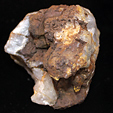 The type of mine dump that is best for metal detecting are the ones that consist of mixed sizes of rock and are located near some sort of excavation, commonly a shaft or adit. Sometimes the piles located along a trench dug by the miners can be productive as well.
The type of mine dump that is best for metal detecting are the ones that consist of mixed sizes of rock and are located near some sort of excavation, commonly a shaft or adit. Sometimes the piles located along a trench dug by the miners can be productive as well.
Prepping For A New Season of Gold Hunting
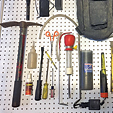 This article will hopefully provide a few constructive hints on how to use your downtime during the cold winter and the wet spring to best prepare for the upcoming nugget-hunting season.
This article will hopefully provide a few constructive hints on how to use your downtime during the cold winter and the wet spring to best prepare for the upcoming nugget-hunting season.
Hunting Down Paystreaks
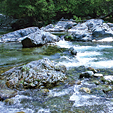 When I teach people about finding gold, I often explain that it is helpful to think of any river or stream that carries gold as being something like a sluice box.
When I teach people about finding gold, I often explain that it is helpful to think of any river or stream that carries gold as being something like a sluice box.
Deep Nuggets From The Strange Little Patch
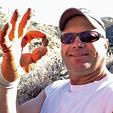 I began detecting at the bottom of the gully and started making my way upstream. About mid-way there was a nice, flat stretch for about ten feet.
I began detecting at the bottom of the gully and started making my way upstream. About mid-way there was a nice, flat stretch for about ten feet.
Springtime Sampling In The High Desert
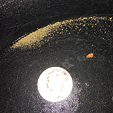 As the ground thaws and dries out and the warmth of spring starts to settle in, it’s time to start afresh with a new prospecting season.
As the ground thaws and dries out and the warmth of spring starts to settle in, it’s time to start afresh with a new prospecting season.
How to Evaluate Mineral Claims—What to Know Before You Buy
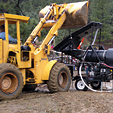 Even though they have put down thousands of dollars, the buyers often stop paying on their claims part way through the process after they realize they’ve been duped, but the company just sells it again to another buyer.
Even though they have put down thousands of dollars, the buyers often stop paying on their claims part way through the process after they realize they’ve been duped, but the company just sells it again to another buyer.
Trip to “The Swamp” on Behalf of Small Miners
 Besides the EPA issue, our major priority is to work on the proposed amendment to the National Strategic and Critical Minerals Production Act (S 145), a bill proposed in the Senate by US Senator Dean Heller (R-Nevada).
Besides the EPA issue, our major priority is to work on the proposed amendment to the National Strategic and Critical Minerals Production Act (S 145), a bill proposed in the Senate by US Senator Dean Heller (R-Nevada).
Dredging Safety: Don't Ignore The Warning Signs
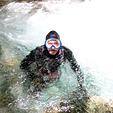 At first, I tried to shift things around, but then a hand with a rock would appear, so I would stop trying to adjust my gear and grab the rock to keep things moving.
At first, I tried to shift things around, but then a hand with a rock would appear, so I would stop trying to adjust my gear and grab the rock to keep things moving.
Trash! A Hindrance Or Hot Spot For Hidden Gold?
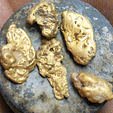 I love it when I am in the middle of a high trash area and all the ferrous bars go away, the screen number goes to a three or an eight, and the meter is forty to a hundred. I don’t know for sure that I have found gold, but it narrows the odds down.
I love it when I am in the middle of a high trash area and all the ferrous bars go away, the screen number goes to a three or an eight, and the meter is forty to a hundred. I don’t know for sure that I have found gold, but it narrows the odds down.
Sulfides and Intergrain Gold Wire Nuggets
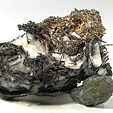 ...these nuggets have not traveled far from the lode because the golden wire lattices would have been torn apart or flattened during weathering of rock and deposition by violent stream action.
...these nuggets have not traveled far from the lode because the golden wire lattices would have been torn apart or flattened during weathering of rock and deposition by violent stream action.
Man Who Died In Yellowstone In 2017 Was Looking For Hidden Treasure
It’s been seven years since Forrest Fenn announced the existence of the buried treasure, said to be worth nearly $2 million. It has prompted thousands to comb areas of New Mexico, Yellowstone National Park and elsewhere.
The Hill of Gold
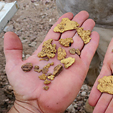 I was amazed and surprised, and I took a moment to admire how beautiful this coarse chunk of gold was. It later weighed exactly one-half ounce.
I was amazed and surprised, and I took a moment to admire how beautiful this coarse chunk of gold was. It later weighed exactly one-half ounce.
Bedrock Gold: When It’s There and When It Isn’t
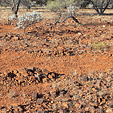 Has your experience ever led you to wonder why some gold is deposited on bedrock and in crevices, while other gold is not? We’re going take a deeper look at this and see what we can figure it out.
Has your experience ever led you to wonder why some gold is deposited on bedrock and in crevices, while other gold is not? We’re going take a deeper look at this and see what we can figure it out.
Mass Wasting & Gold Deposits
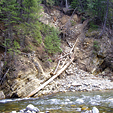 Not all of these slides and debris flows will produce results, but if you search for these while prospecting in your gold producing areas, then you can increase your odds of finding new gold.
Not all of these slides and debris flows will produce results, but if you search for these while prospecting in your gold producing areas, then you can increase your odds of finding new gold.
The “Push” for Gold—The Great Nevada Adventure Continues
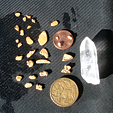 I got a signal but knew it was small. Still, I was very happy to find something. I continued and got another signal. Yes! A bigger nugget! Then I got another signal.
I got a signal but knew it was small. Still, I was very happy to find something. I continued and got another signal. Yes! A bigger nugget! Then I got another signal.
The Black Diamond of the Forest
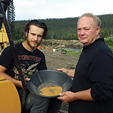 Hearty trees, shrubs and plants are a product of the soil conditions in which they grow, so it makes sense that roots near an ore deposit will take on nutrients containing metals if they are present.
Hearty trees, shrubs and plants are a product of the soil conditions in which they grow, so it makes sense that roots near an ore deposit will take on nutrients containing metals if they are present.
Follow the Line
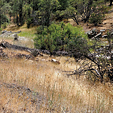 Four nuggets, ranging from one to four pennyweight, had been found originally. All four nuggets were found in a line about ten feet apart from each other.
Four nuggets, ranging from one to four pennyweight, had been found originally. All four nuggets were found in a line about ten feet apart from each other.
Bedrock Nugget Hunting: Tools of the Trade
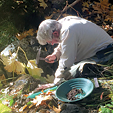 As a guide to those who are thinking of taking up this activity or those who currently practice this trade, I have created a listing of the primary tools and equipment I use when nugget hunting.
As a guide to those who are thinking of taking up this activity or those who currently practice this trade, I have created a listing of the primary tools and equipment I use when nugget hunting.












